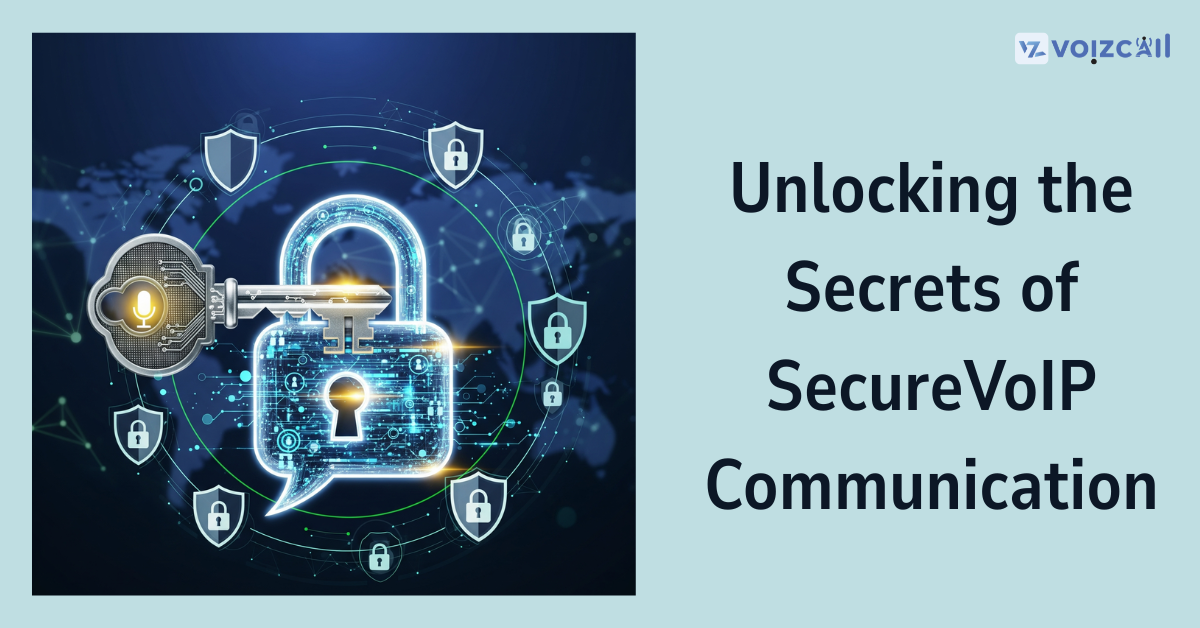


31/Jul/2025
Introduction:
VoIP revolutionized business and personal communication. VOIP is fast, flexible and low cost, the thing is that VoIP security is something that is not taken into account until something wrong happens.
Voice over IP calls can leak sensitive conversations and sensitive business information, be it through eavesdropping, or even spoofing attacks. In the case you use VoIP or are ready to change to VoIP, you need to know the secrets of safe VoIP conversation in order to be ahead of hackers.
This will break it all down in easy-to-understand language. No complex tech talk—just real solutions.
Why VoIP Security Matters
VoIP information uses the internet hence can be intercepted.
Malevolent uses of un secured VoIP systems include, toll robbery, identity theft or even DDoS attacks.
The need to use secure voice communication is dictated by the regulations such as GDPR and HIPAA, the enforcement of which is needed to address the issues in the financial and healthcare industries.
Secrets to Securing VoIP Communication
These are the basic techniques and best practices that constitute a secure VoIP infrastructure:
1. Encrypted Protocols (SRTP + TLS)
Call / Email for Sales Inquiry Today
The importance of this is that unencrypted VoIP packets can be monitored and tapped out by network attackers.
Best practice:
Secure audio with Secure RTP (SRTP).
Transport layer security (TLS) based secure SIP signaling.
Block legacy protocols like plain SIP over UDP.
2. Firewall & VoIP-Aware Session Border Controller (SBC) configuration
Why it is necessary: VoIP networks leave open ports to the internet, inviting unwanted traffic.
Best practice:
Use VoIP firewalls to detect and control signaling/media streams.
Deploy an SBC to act as a gatekeeper, filtering out malicious traffic and safe NAT traversal.
3. Enable Strong Authentication
"Why it matters: Weak passwords are the most convenient starting role of the attackers.
Best practice:
Adopt powerful SIP credentials and password with complex and unique qualities.
In cases where possible, turn on two-factor authentication (2FA).
They should set limitation to logins and file brute-force attack reports.
4. VoIP Software should be regularly updated and patched.
Why it matters: Aging systems and software keep known flaws on board.
Your PBX, VoIP softphone, and firmware should be kept up-to-date regularly.
Deploy security patches on release time.
Subscribe to the vendor security announcements and changelogs.
5. Select a Reputed VoIP Service Provider
What makes it important: The route of your calls and data confidentiality is performed by your provider.
Best practice:
Select providers with end-to-end encryption, geo-redundancy, and abidance by data privacy.
Have remote access using VPNs or secured WebRTC access.
Avoid untrusted or free VoIP services offering no security guarantees.
6. Logging and Monitoring of All VoIP Activity
Why it matters: Very early detection of abnormal behavior will prevent big breaches.
Best practice:
Create real-time alerts on malicious call activity or access attempts.
Scout call logs, registration attempts, and SIP traces periodically.
Use VoIP security features to audit and lock down your system.
7. Securing Remote and Mobile VoIP Access
Why it matters: More attack surface is exposed by remote users and mobile apps.
Best practice:
Make sure that mobile VoIP clients conform to the identical encryption and authentication rules of the desktop clients.
Block SIP registration of unrecognized IPs.
Finishing Words: Be Clever, Be Safe
VoIP promises freedom, flexibility and colossal savings in cost but only provided that it is safe.
These security best practices are ways of ensuring your calls were not intercepted, your systems cannot be compromised, and that your business does not lose customers due to loss of confidence in your business. Secure VoIP communication is not an option, in a day and age when data privacy and security threats through incidents like data breaches and cyberattacks are on an increase.